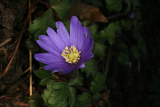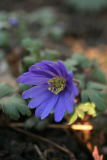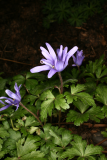Additional notes (click to expand)
Nomenclature
Windflower. Anemone nemorosa is a synonym.
http://www.plantsoftheworldonline.org/
Toxicity
Notes: Like many members of the Ranunculaceae family, it is poisonous. Fresh plant material can cause severe gastric irritation if eaten and a local dermatitis if applied to the skin. Drying or cooking the plant material appears to abolish this property. It is used in herbalism, applied to rheumatic joints, and may act as a counter-irritant.
Oakeley, Dr. H. F. (2013). The Gardens of the Pharmacopoeia Londinensis.
Geographical distribution
- Asia-Temperate, Western Asia, Turkey
- Europe, Eastern Europe, Baltic States
- Europe, Eastern Europe, Belarus
- Europe, Eastern Europe, Central European Russia
- Europe, Eastern Europe, Ukraine
- Europe, Middle Europe, Austria
- Europe, Middle Europe, Belgium
- Europe, Middle Europe, Germany
- Europe, Middle Europe, Hungary
- Europe, Middle Europe, Netherlands
- Europe, Middle Europe, Poland
- Europe, Middle Europe, Switzerland
- Europe, Northern Europe, Denmark
- Europe, Northern Europe, Finland
- Europe, Northern Europe, Great Britain
- Europe, Northern Europe, Ireland
- Europe, Northern Europe, Norway
- Europe, Northern Europe, Sweden
- Europe, Southeastern Europe, Albania
- Europe, Southeastern Europe, Bulgaria
- Europe, Southeastern Europe, Greece
- Europe, Southeastern Europe, Italy
- Europe, Southeastern Europe, Romania
- Europe, Southeastern Europe, Yugoslavia
- Europe, Southwestern Europe, France
- Europe, Southwestern Europe, Spain
Anemonoides nemorosa (L.) Holub
Family: RANUNCULACEAEGenus: Anemonoides
Species: nemorosa (L.) Holub
Common names: Wood Anemone; European thimbleweed
Distribution summary: Europe
Habit: Bulbous
Hardiness: H5 - Hardy; cold winter
Habitat: Woodlands
Garden status: Not currently grown
Flowering months: March, April, May
Reason for growing: Medicinal, toxic


